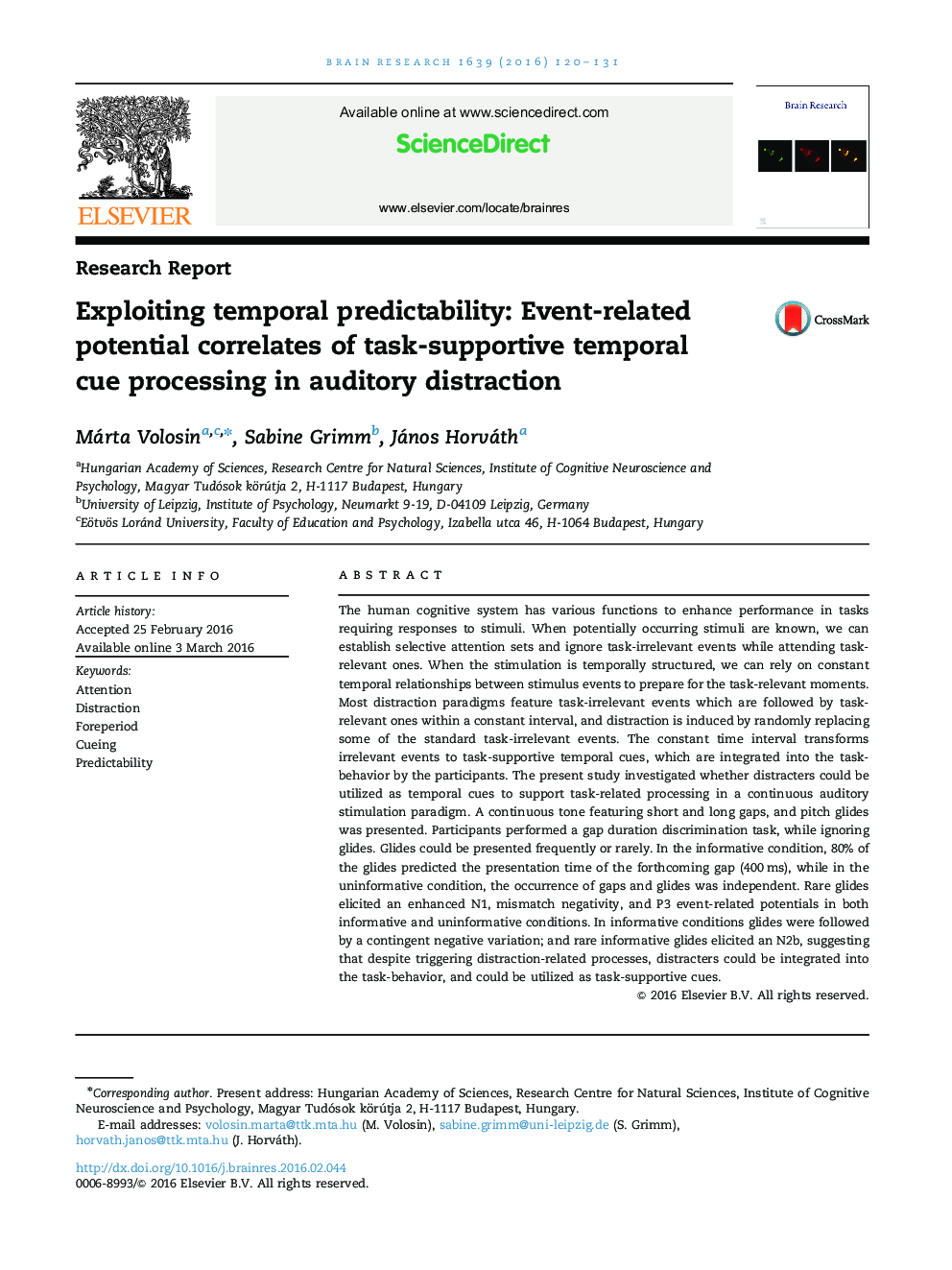| Article ID | Journal | Published Year | Pages | File Type |
|---|---|---|---|---|
| 6262577 | Brain Research | 2016 | 12 Pages |
â¢Distraction studies use event pairs separated by fixed time intervals (foreperiod).â¢The first (distracter) event is task-irrelevant, the second is task-relevant.â¢The fixed foreperiod allows the temporal prediction of the target event onset.â¢The temporal information content of the distracter was manipulated.â¢Informative distracters elicited ERPs reflecting cue information processing.
The human cognitive system has various functions to enhance performance in tasks requiring responses to stimuli. When potentially occurring stimuli are known, we can establish selective attention sets and ignore task-irrelevant events while attending task-relevant ones. When the stimulation is temporally structured, we can rely on constant temporal relationships between stimulus events to prepare for the task-relevant moments. Most distraction paradigms feature task-irrelevant events which are followed by task-relevant ones within a constant interval, and distraction is induced by randomly replacing some of the standard task-irrelevant events. The constant time interval transforms irrelevant events to task-supportive temporal cues, which are integrated into the task-behavior by the participants. The present study investigated whether distracters could be utilized as temporal cues to support task-related processing in a continuous auditory stimulation paradigm. A continuous tone featuring short and long gaps, and pitch glides was presented. Participants performed a gap duration discrimination task, while ignoring glides. Glides could be presented frequently or rarely. In the informative condition, 80% of the glides predicted the presentation time of the forthcoming gap (400Â ms), while in the uninformative condition, the occurrence of gaps and glides was independent. Rare glides elicited an enhanced N1, mismatch negativity, and P3 event-related potentials in both informative and uninformative conditions. In informative conditions glides were followed by a contingent negative variation; and rare informative glides elicited an N2b, suggesting that despite triggering distraction-related processes, distracters could be integrated into the task-behavior, and could be utilized as task-supportive cues.
